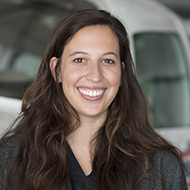Training and Safety Tip: More than a feeling
Visual flight rules (VFR) flight into instrument meteorological conditions (IMC) remains a leading factor in weather-related fatal accidents. In these accidents, pilots often lose control of the aircraft as a result of spatial disorientation.
What is spatial disorientation? It is the mistaken perception of one’s position and motion relative to the Earth. Any condition that deprives you of natural, visual references to maintain orientation during flight (like clouds, smoke, flying at night over a large body of water, or other conditions) can rapidly cause spatial disorientation. Basically, your body feels one way when what’s actually occurring is something else—for example, you may feel as though you are in a turn, while the wings are, in reality, straight and level.
- If you are not instrument rated, do not fly in instrument conditions. While instrument-rated pilots aren’t immune from spatial disorientation, the majority of loss-of-control accidents in VFR into IMC conditions are attributed to VFR-only pilots.
- Stay sharp. If you are instrument rated, hone your skills frequently and be proficient in partial panel and hand flying—whether in simulated or actual instrument conditions. Flying an ILS approach on autopilot in visual meteorological conditions (VMC) is one thing, but hand-flying one in bumpy IMC is something entirely different.
- One reason pilots may fly VFR into IMC when they’re not up to the task is because they don’t understand just how quickly the onset of spatial disorientation can occur. And since there’s no requirement to fly in actual IMC to earn an instrument rating, instrument-rated pilots may underestimate spatial disorientation as well. One way to avoid this? Experience spatial disorientation safely, in VMC with a flight instructor. With a good view-limiting device, an instructor can help you understand spatial disorientation. Once disoriented, if you’re a VFR pilot, attempt a 180-degree turn. If you’re an instrument-rated pilot, fly an approach. The shocking discomfort and challenge of overcoming spatial disorientation may change your approach to the proficiency level required to safely fly in instrument conditions.



